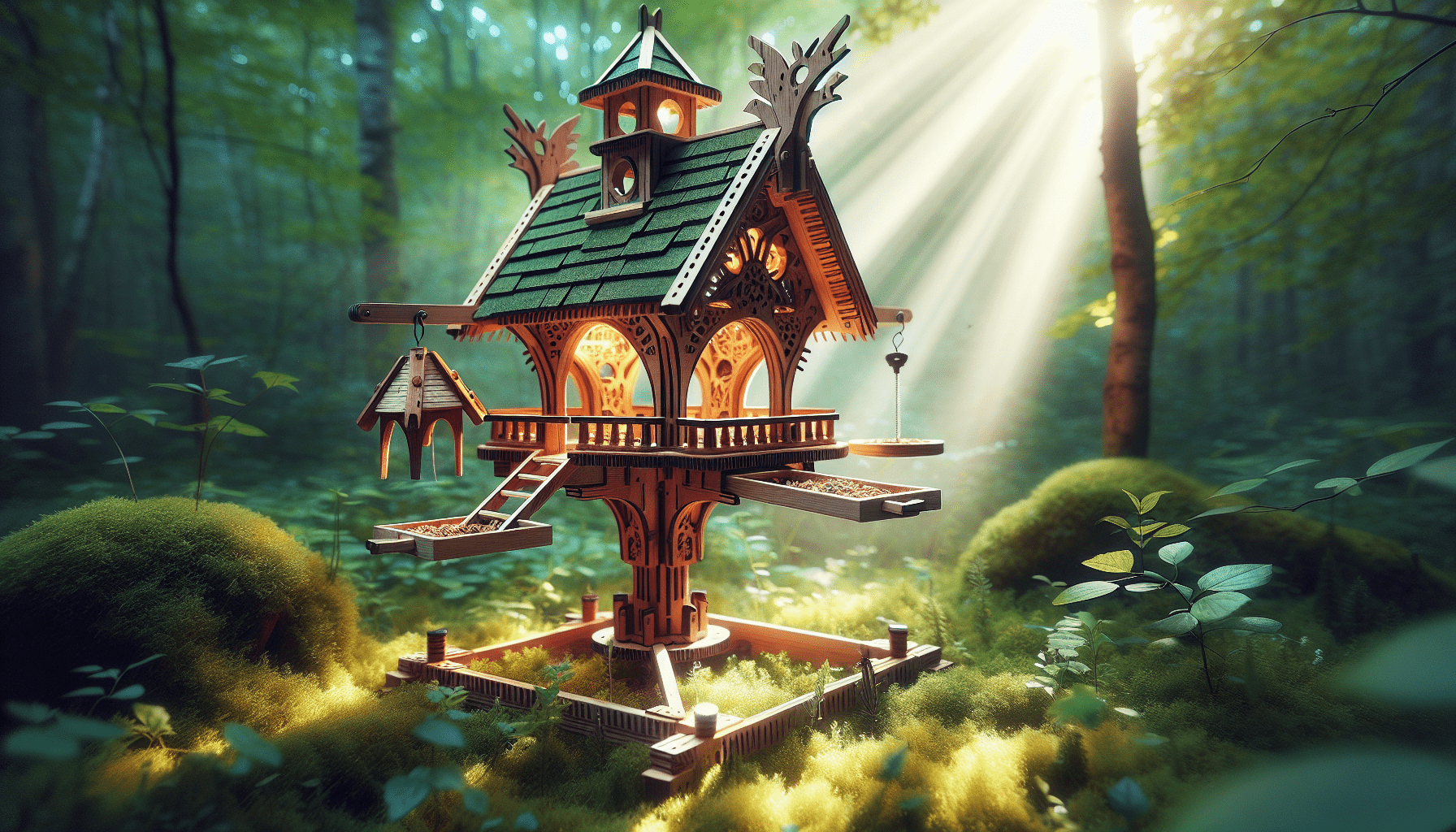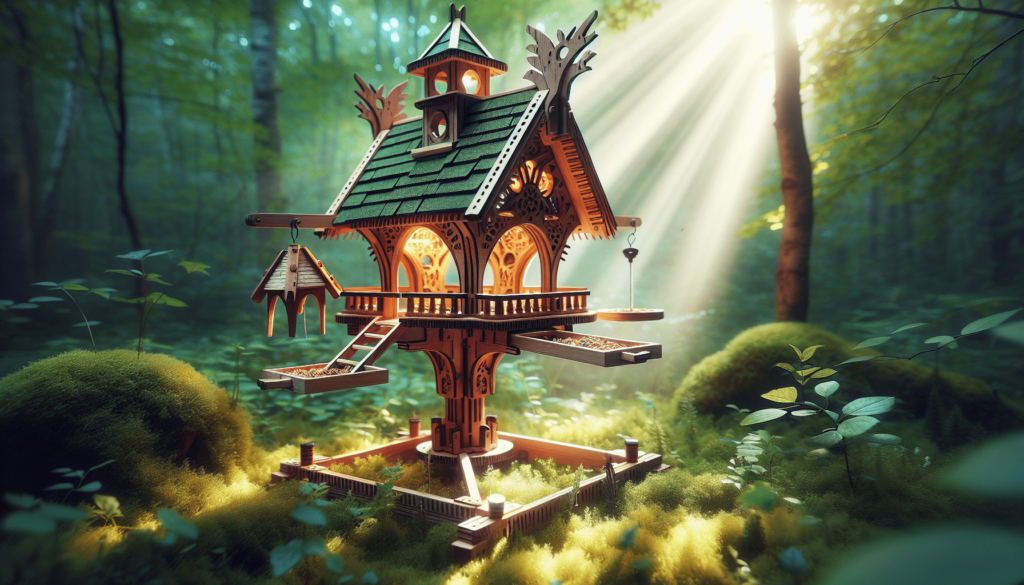
Have you ever wondered how to make your deer feeder even more effective? Deer feeding is not just about tossing some corn or feed into a container and hoping for the best. With a few enhancements, you can transform your deer feeder into a reliable source of nourishment that attracts more deer and optimizes their feeding time. This article will guide you through some practical DIY enhancements that can dramatically boost your feeder’s efficiency.
Understanding the Basics of Deer Feeding
Before making any enhancements to your feeder, it’s essential to understand a few basics about deer and their feeding habits.
The Diet of Deer
Deer are herbivores with specific nutritional needs. Their diet mainly consists of:
- Grasses
- Leaves
- Flowers
- Fruits
- Nuts
Knowing what deer like to eat will help you choose the right feed to attract them.
Feeding Behavior
Deer are creatures of habit and will often return to familiar feeding spots. This makes it crucial to maintain a consistent feeding schedule to draw them in. Understanding their behavior will enhance your feeder’s efficiency.
Choosing the Right Feeder
Not all deer feeders are created equal. Selecting the right type can make a significant difference in their feeding patterns.
Types of Feeders
Here’s a breakdown of different types of feeders:
| Type of Feeder | Description | Advantages |
|---|---|---|
| Gravity Feeders | Uses gravity to allow feed to fall to the ground. | Easy to fill, low maintenance. |
| Automatic Feeders | Dispenses feed at set intervals. | Provides consistent feeding schedule. |
| Protein Feeders | Designed to hold high-protein feeds. | Attracts deer looking for nutritional value. |
| Bucket Feeders | Simple, often homemade feeders. | Affordable and customizable. |
When considering a feeder, think about factors like location, the amount of feed you want to use, and how often you intend to refill it.

Enhancing Your Feeder’s Structure
Sometimes, it’s not just about what you put in your feeder, but how the feeder is designed that matters. You can make various structural enhancements to improve performance.
Making It Weather-Proof
Deer feeders are often exposed to harsh weather conditions, which can lead to spoilage of the feed. To enhance your feeder:
- Cover It: Adding a roof can protect the feed from rain and snow.
- Use Durable Materials: Ensure the feeder is made from weather-resistant materials like treated wood or metal.
These simple adjustments can keep your feed fresh and appealing for longer.
Elevation Matters
Elevating your feeder can make it more accessible for deer while preventing other animals from stealing the feed. Here’s how you can do it:
- Build A Platform: Create a raised base using wooden beams.
- Attach Legs: If you’re using a bucket-style feeder, consider attaching sturdy legs.
Elevating the feeder helps in keeping the feed cleaner and accessible.
Feed Selection and Enhancement
Having the right feed is crucial for drawing in deer. However, you might want to enhance the feed itself for greater effectiveness.
Types of Deer Feed
Besides standard feed, consider these options:
| Type of Feed | Purpose |
|---|---|
| Grain Mix | Provides basic nutrition. |
| Mineral Blocks | Offers essential minerals for deer health. |
| Attractants | Flavors and scents that draw deer in. |
Selecting the right mix can ensure that your feeder becomes a hotspot for deer.
Customizing the Feed
You can also create your special mixture to entice deer. Here’s a simple recipe you might want to try:
- Base: 50% corn
- Protein: 30% soybean or alfalfa pellets
- Attractant: 20% sweet feed (molasses or sugar added)
Combine these ingredients in a large bucket, and you’ll have a nourishing blend that draws deer in effectively!

Scent Enhancement Techniques
Deer rely heavily on their sense of smell to locate food sources. You can capitalize on this by using scents strategically.
Using Natural Attractants
Consider using natural scents to attract deer:
- Apple Scent: Use apple-scented oils or actual apples.
- Vanilla Extract: Adding a few drops can create an enticing aroma.
Try coating the feed with these scents, and you might notice deer stopping by more often!
Commercial Attractants
If you’re looking for convenience, various commercial attractants are available. These products often contain scents and flavors specifically designed to lure deer. Just sprinkle some on your feed or around the feeder area for instant appeal.
Deer Feeding Station Setup
Your feeding station’s placement can affect how many deer visit.
Optimal Location
- Distance from Human Activity: Place feeders away from high-traffic areas to create a more inviting atmosphere.
- Natural Cover: Choose spots near bushes or trees that provide deer with cover and a sense of security.
The right location can significantly boost your feeder’s effectiveness.
Layout and Design
Consider the layout around your feeder as well. A simple setup might include:
- Clear Pathways: Ensure there’s a clear path to the feeder from the nearby cover.
- Water Source Nearby: If possible, position your feeder near a water source, as deer need hydration.
This attention to layout can make visiting your feeder appealing and convenient for deer.
Maintenance for Longevity
Keeping your feeder in good shape is vital for its ongoing efficiency.
Regular Cleaning
Periodically clean out your feeder to prevent mold and spoilage. Here are some tips:
- Empty out old feed every month and clean with a mild bleach solution.
- Rinse thoroughly to remove any bleach residue.
Regular maintenance keeps the feed fresh, ensuring deer keep returning.
Checking for Damage
Make it a routine to check for any signs of wear or damage. Look for:
- Rust on metal feeders
- Cracks in plastic containers
- Loose parts in gravity feeders
By addressing these issues early, you can prolong your feeder’s lifespan and maintain its efficiency.
Seasonal Adjustments
Different seasons bring varying challenges and opportunities for deer feeding.
Fall and Winter
During colder months, consider:
- Higher Caloric Feeds: Deer require more energy to stay warm.
- Increased Feed Supply: Refill more frequently during winter as deer will need more resources.
Spring and Summer
In warmer months, focus on:
- Hydration: Ensure a nearby water source is available, as deer need it for hydration during hot days.
- Less Frequent Feeding: Deer may find plenty of natural food during spring and summer, allowing you to lessen feed amounts.
Adapting your feeding practices according to the season can lead to better results.
Community Engagement
Sharing your knowledge with other hunting enthusiasts can enhance your deer feeding experience.
Joining Local Groups
Consider joining local hunting clubs or online forums to share tips and tricks. Many members have insights that can help optimize your feeder’s efficiency further.
Organizing Group Feeds
Organizing group feeding events can also provide an opportunity to learn from others. You might discover new feeding techniques or enhancements to try.
Final Thoughts
Enhancing your deer feeder is a rewarding endeavor that pays off in the long run. With the right adjustments and care, you can create an efficient feeding system that attracts more deer than ever before. Remember to stay observant of deer habits and adjust your practices accordingly. Enjoy your time in nature and the satisfaction that comes from providing for wildlife.
With each enhancement you make, you not only improve your feeding strategy but also deepen your connection with the environment around you. Here’s to successful deer feeding experiences ahead!





